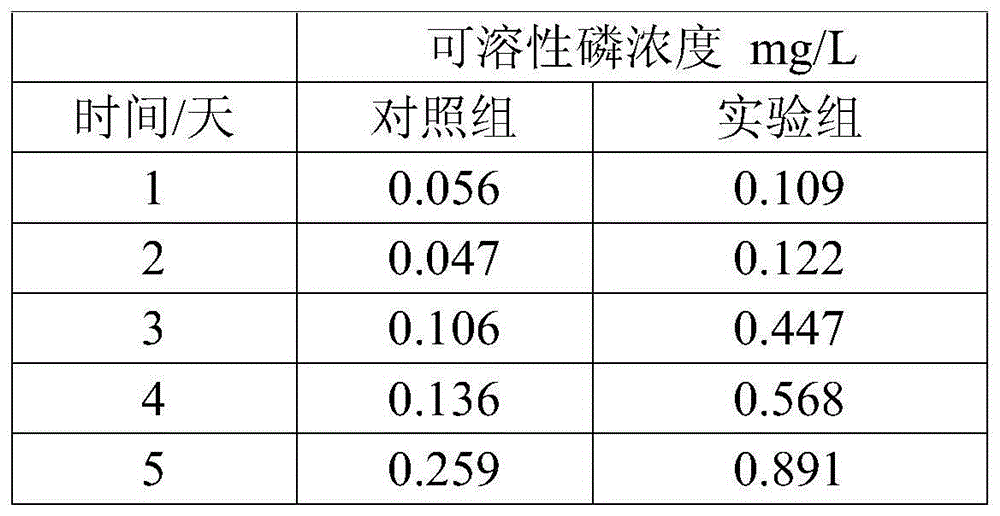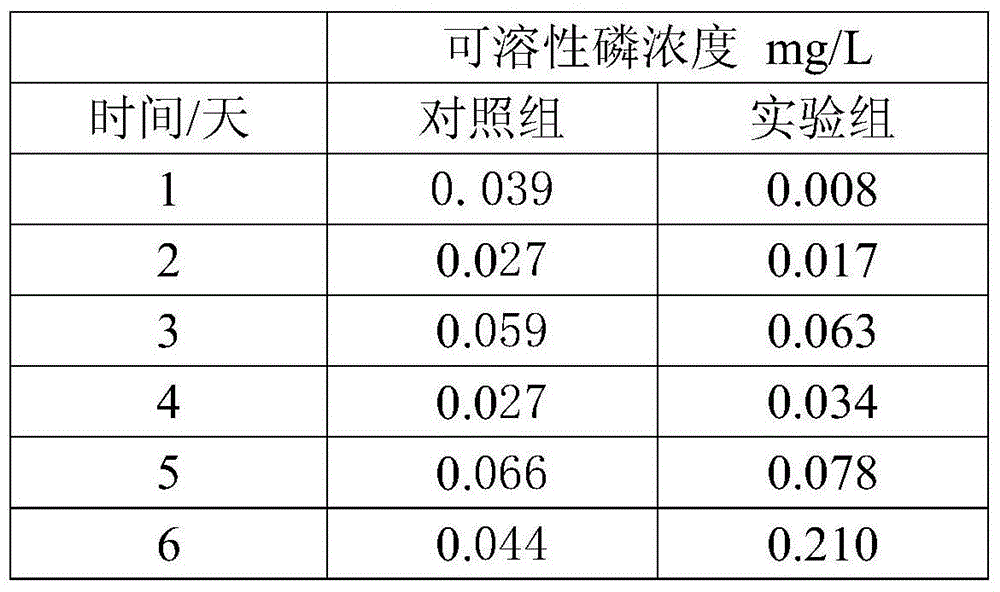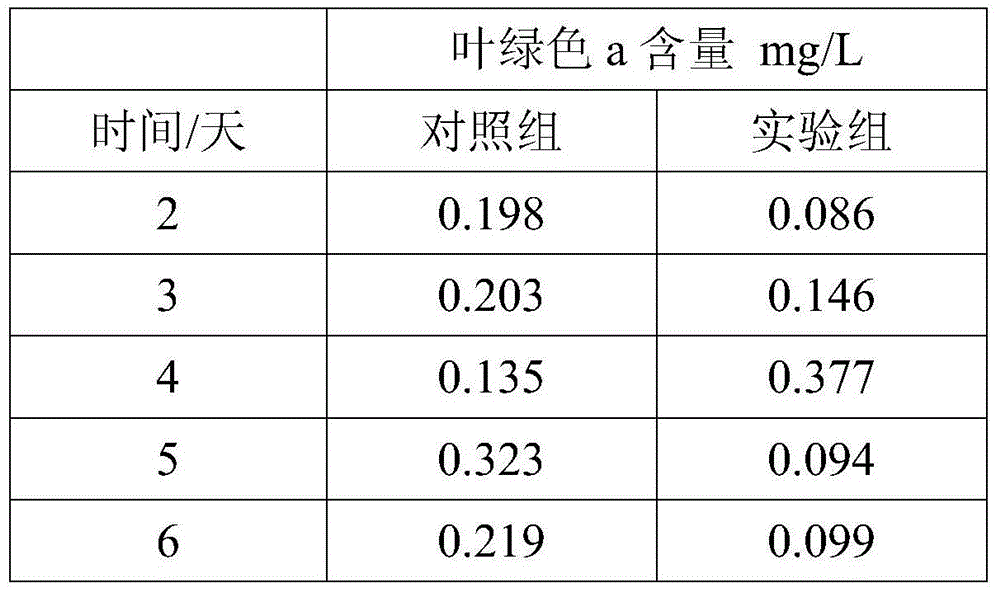Preparation for promoting phosphorous release of bottom sludge of aquaculture pond, and preparation method and application of preparation
A technology for releasing pond sediment and phosphorus, which is applied in the direction of microorganism-based methods, biochemical equipment and methods, and biological sludge treatment, can solve the problems of high removal cost, lack of phosphorus in water bodies, and low utilization rate, and achieve the goal of resolving Use problems, improve bottom and water quality, and realize the effect of recycling
- Summary
- Abstract
- Description
- Claims
- Application Information
AI Technical Summary
Problems solved by technology
Method used
Image
Examples
preparation Embodiment 1
[0024] 1.1 Raw materials:
[0025] A compound microbial preparation for promoting the release of phosphorus from the bottom mud of a culture pond, which consists of the following components in parts by weight: 45 parts of Bacillus phosphorus solubilizers, 35 parts of phytase, and 15 parts of sodium humate; wherein 45 parts of Bacillus phosphorus solubilizers Parts are composed of 20.25 parts of Bacillus megaterium, 12 parts of Bacillus amyloliquefaciens and 12.75 parts of Bacillus colioids, that is, Bacillus megaterium accounts for 45% of the weight of Bacillus phosphorus solubilizers.
[0026] Prepare 1000Kg of composite microbial preparations for promoting the release of phosphorus from cultured pond bottom mud of the present invention, the specific consumption of the raw materials is: 213.2Kg of Bacillus megaterium, 126.3Kg of Bacillus amyloliquefaciens, 134.2Kg of Bacillus coliformis, 368.4Kg of phytase , Sodium humate 157.9Kg.
[0027] 1.2 Preparation method: Mix the abo...
preparation Embodiment 2
[0029] 2.1 Raw materials:
[0030] A compound microbial preparation for promoting the release of phosphorus from the bottom mud of a culture pond, which consists of the following components in parts by weight: 30 parts of Bacillus phosphorus solubilizers, 50 parts of phytase, and 25 parts of sodium humate; wherein 30 parts of Bacillus phosphorus solubilizers Parts consist of 12 parts of Bacillus megaterium, 3 parts of Bacillus amyloliquefaciens and 15 parts of Bacillus colloidus, that is, Bacillus megaterium accounts for 40% of the weight of Bacillus phospholiquefaciens.
[0031] Prepare 1000Kg of composite microbial preparations for promoting the release of phosphorus from cultured pond bottom mud of the present invention, the specific consumption of said raw materials is: Bacillus megaterium 114.3Kg, Bacillus amyloliquefaciens 28.6Kg, Bacillus colloidus 142.9Kg, phytase 476.2Kg , Sodium humate 238.0Kg.
[0032] 2.2 Preparation method: Mix the above-mentioned raw materials f...
preparation Embodiment 3
[0034] 3.1 Raw materials:
[0035] A compound microbial preparation for promoting the release of phosphorus from the bottom mud of a culture pond, which consists of the following components in parts by weight: 60 parts of Bacillus phosphorus solubilizers, 20 parts of phytase, and 10 parts of sodium humate; wherein 60 parts of Bacillus phosphorus solubilizers Parts consist of 30 parts of Bacillus megaterium, 2 parts of Bacillus amyloliquefaciens and 28 parts of Bacillus colloidus, that is, Bacillus megaterium accounts for 50% of the weight of Bacillus phospholyticus.
[0036] Prepare 1000Kg of composite microbial preparations for promoting the release of phosphorus from cultured pond bottom mud of the present invention, the specific consumption of the raw materials is: 333.3Kg of Bacillus megaterium, 22.2Kg of Bacillus amyloliquefaciens, 311.2Kg of Bacillus coliformis, 222.2Kg of phytase , Sodium humate 111.1Kg.
[0037] 3.2 Preparation method: Mix the above-mentioned raw mate...
PUM
 Login to View More
Login to View More Abstract
Description
Claims
Application Information
 Login to View More
Login to View More - R&D
- Intellectual Property
- Life Sciences
- Materials
- Tech Scout
- Unparalleled Data Quality
- Higher Quality Content
- 60% Fewer Hallucinations
Browse by: Latest US Patents, China's latest patents, Technical Efficacy Thesaurus, Application Domain, Technology Topic, Popular Technical Reports.
© 2025 PatSnap. All rights reserved.Legal|Privacy policy|Modern Slavery Act Transparency Statement|Sitemap|About US| Contact US: help@patsnap.com



